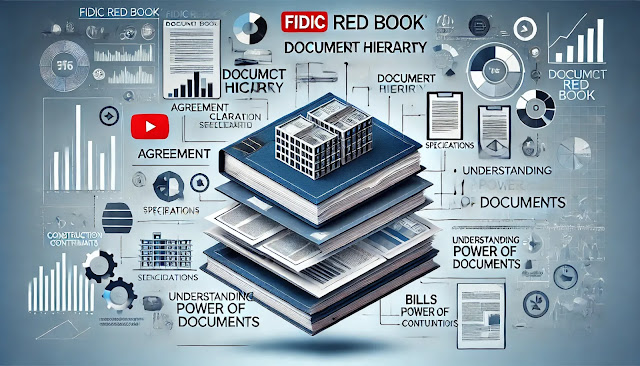📜 Document Hierarchy
in FIDIC Red Book Revisions 📜
When it comes to FIDIC contracts, the power of documents
sets the order of precedence, ensuring clear direction in case of conflicts.
Here’s how document hierarchy has evolved across FIDIC Red Book editions:
🔹 1987 Edition:
Limited hierarchy guidance, but generally prioritized:
- Contract
Agreement
- Conditions
of Contract
- Specifications
- Drawings
- Bills
of Quantities
🔹 1999 Edition:
Formalized the order, providing a specific list to resolve inconsistencies:
- Contract
Agreement
- Letter
of Acceptance
- Particular
Conditions
- General
Conditions
- Specifications
- Drawings
- Bills
of Quantities
- Other
documents forming part of the contract
🔹 2017 Edition:
Expanded clarity and precision, prioritizing custom project needs:
- Contract
Agreement
- Letter
of Acceptance
- Particular
Conditions
- General
Conditions
- Specifications
- Schedules
(including Bills of Quantities)
- Drawings
- Any
other contract documents
Each update brings greater clarity and reduces ambiguity,
ensuring project-specific conditions always take precedence over general
terms. These guidelines are crucial for a smooth, conflict-free construction
process! 💼✨
Note: in some FIDIC contracts from the 1987 issuance, there are instances where Drawings are given higher priority than Specifications. This order, however, was not standardized across all 1987 FIDIC contracts, as the document hierarchy was less consistent and sometimes left to interpretation or project-specific agreements.
This hierarchy placement could be influenced by the project’s nature, as Drawings often provide specific visual details that may need to override the general text in Specifications. However, FIDIC has since standardized the hierarchy in later versions, such as the 1999 and 2017 editions, where Specifications generally hold higher priority than Drawings.
#FIDIC #Construction #ContractManagement #ProjectClarity #Engineering
Khaled Alaghawani

.png)

.png)
0 Comments